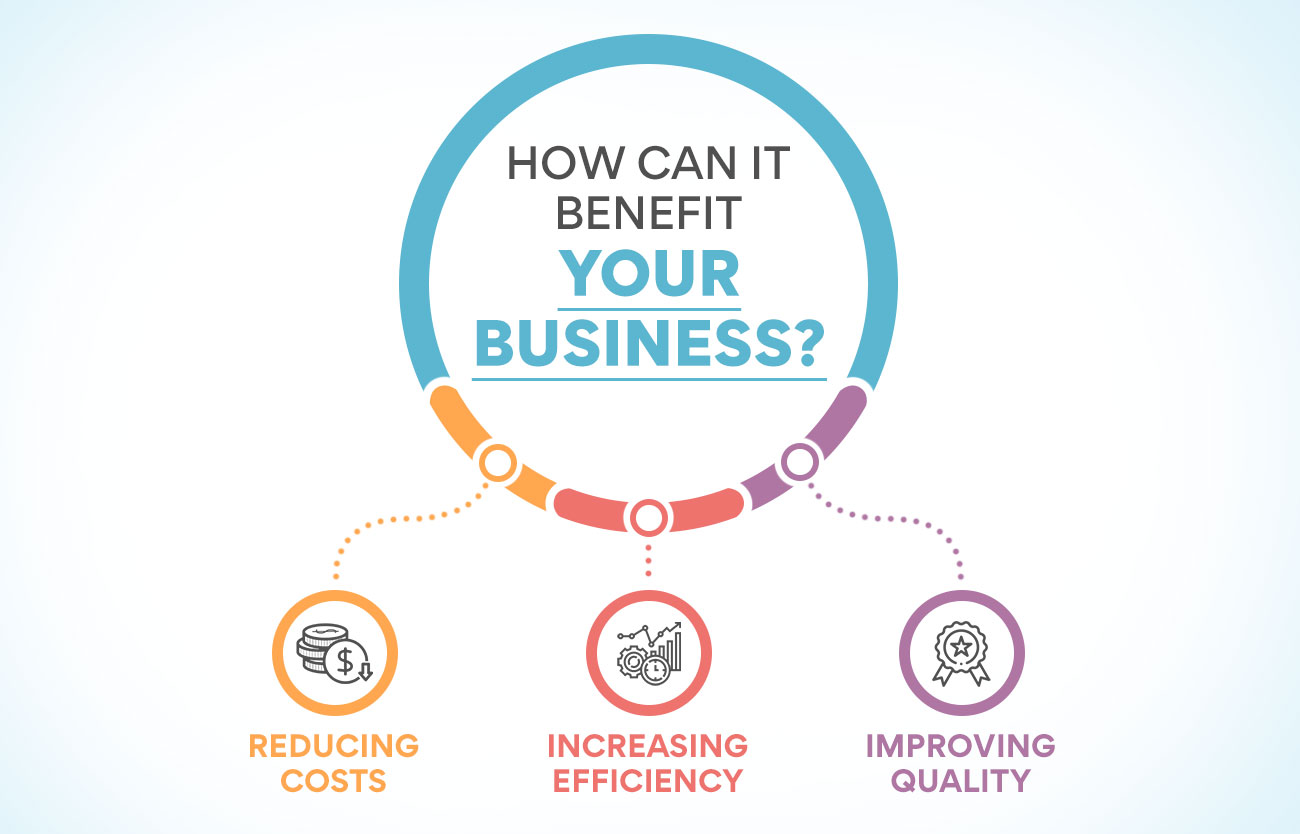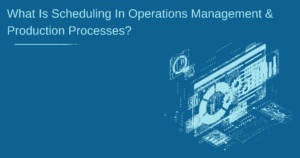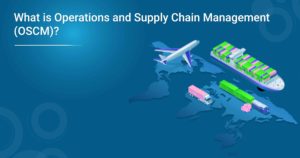Process improvement involves implementing new technologies, strategies, and systems that will streamline workflows and enhance performance. In business, process improvement is making your operations more efficient and cost-effective. It’s becoming increasingly important in today’s competitive market as companies strive to increase their efficiency while reducing costs.
Businesses, irrespective of their size and structure, always look for ways to improve efficiency and productivity. This is where process improvement comes in. Process improvement is the systematic approach to making changes to business processes to make them more efficient and productive. It can be applied to individual workflows or the entire organisation. In this blog post, we will discuss the importance of process improvement and how it can benefit your business!
What is Process Improvement For Business?
Process improvement is the process of analysing current processes and implementing changes to make those processes more efficient. It can be applied to any process in any organisation, from manufacturing to customer service.
It has many benefits, including reducing costs, increasing efficiency, and improving quality. Implementing process improvements can help organisations achieve their goals and improve their bottom line.
It is an essential part of operations management and can help organisations reach their full potential. If you’re looking to improve your business, process improvement may be the answer.
How can it benefit your business?
Reducing Costs: One of the main benefits of process improvement is that it can help reduce costs. Streamlining processes and eliminating the wastage of resources will allow businesses to save money. The savings can be utilised to reinvest in the business or to improve profits.
Increasing Efficiency: Process improvement can also help businesses increase their efficiency. By improving processes, businesses can get more work done in less time. It will free up resources that can be utilised elsewhere or help improve the bottom line.
Improving Quality: Process improvement can also lead to improved quality. Streamlining processes can help reduce mistakes and improve the overall quality of products and services. This can lead to happier customers and enhanced profits.
What Are The Different Techniques For Process Improvement?
Many techniques can be used to improve operations and management within a company. These techniques help identify process improvements, process mapping, process designs, process metrics, and process improvement tools.
Process improvement techniques help you optimise your business processes to achieve better efficiency and effectiveness. They also help you to troubleshoot process bottlenecks and optimise process workflows.

Let’s discuss some of the popular techniques for process improvement:
Six Sigma
Six Sigma is a process improvement technique that is widely used in manufacturing and other industries. It aims to reduce defects in process outputs by identifying and addressing process variability. Six Sigma allows you to achieve process improvements by using data and statistical analysis. The steps involved in Six Sigma are:
- Define the process
- Measure process performance
- Analyse process data to identify process improvements
- Improve process performance
- Control process performance to maintain process improvements
Total Quality Management (TQM)
Total Quality Management is focused on providing quality products and services to customers. TQM aims to achieve process excellence by improving the quality of process outputs. With this technique, businesses can identify process deficiencies and take corrective action to enhance the quality of the process. The steps involved in TQM are:
- Plan for process improvements
- Make process improvements
- Check process performance
- Act to maintain process improvements
Value Stream Mapping
Value stream mapping can help you understand and improve the flow of materials and information in your organisation. It is a graphical representation of the steps in a process, showing how resources are used to create value for customers.
Value Stream Mapping can be used to
- Understand the current state of a process
- Identify areas for improvement
- Develop a plan for improving the process
Value Stream Mapping will help you improve your operations and create more value for your customers. This is one of the ideal tools to achieve process excellence.
SIPOC Analysis
A SIPOC (suppliers, input, process, output, customer) diagram in process improvement provides a high-level view of a process. It is used to identify a process’s key suppliers, inputs, process steps, outputs, and customers.
SIPOC diagrams are a valuable tool for process improvement teams because they can help to:
- Identify process inputs and outputs
- Identify process customers and their requirements
- Identify process suppliers
- Clarify the relationships between process inputs and outputs
- Map out the process steps
- Identify process bottlenecks
- Improve process flow
When used in conjunction with other process improvement tools, such as process mapping, SIPOC diagrams can be a powerful tool for identifying process improvement opportunities.
Cause And Effect Analysis
Process improvement tools help you identify the root cause of process issues to implement corrective actions. It is important as it allows you to identify and fix the underlying causes of process problems rather than just treating the symptoms.
One popular process improvement tool is cause and effect analysis, also known as the “fishbone” or “Ishikawa” diagram. This tool is used to identify all of the potential causes of a problem, making it easier to narrow down the common reasons and develop a plan to address them.
To use cause and effect analysis, start by identifying the problem you want to solve. Then, draw a diagram with the problem at the head and potential causes branch out from it. Finally, brainstorm all of the possible causes of the problem and add them to the diagram.
It is best used in:
- Defining and narrowing down the scope of a problem
- Brainstorming potential causes of a problem
- Developing corrective actions to address the root causes of a problem
- Evaluating the effectiveness of corrective actions
Kanban
Kanban is a process improvement methodology that helps organisations optimise their operations and delivery process. It was initially developed by Toyota in the 1940s and has since been adopted by many companies in various industries. Kanban is a tool based on the principle of continuous improvement, which is a crucial tenet of operations management.
Kanban helps organisations visualise their work process, identify bottlenecks, and implement process improvements. The ultimate goal of Kanban is to help organisations achieve their desired outcomes more efficiently and effectively.
There are several benefits that Kanban can provide, such as:
- Improved process efficiency
- Reduced process cycle times
- Improved quality of output
- Increased customer satisfaction
5S
Operations management is the process of organising, planning, and controlling the resources needed to produce goods and services. It includes the management of both the process and resources. Operations management aims to create goods and services that meet customer demands while maximising efficiency and productivity.
5S is a part of process improvement that includes the following five steps:
- Sort (Seiri): Remove all unnecessary items from the work area.
- Set in Order (Seiton): Organise the remaining items so they can be easily accessed.
- Shine (Seiso): Clean the work area and all equipment.
- Standardise (Seiketsu): Establish procedures for maintaining the first three steps.
- Sustain (Shitsuke): Maintain the process through continuous improvement.
PDCA
The key to process improvement is understanding that it is a never-ending cycle. You are constantly trying to find ways to improve your process and make it more efficient. Using the PDCA cycle. Plan, Do Check, Adjust is the ideal way to do it.
You start by planning what you want to change and why. Then you implement the changes and see how they affect your process. After that, you check the results to see if they are what you expected. Finally, you adjust your process based on what you learned.
The best use of PDCA can be:
- When you want to improve process performance
- When you want to reduce process variation
- When you want to implement a new process or change an existing
- process
- When you want to understand the cause of a process problem
Process improvement aims to optimise performance by identifying and eliminating waste, improving quality, and increasing productivity. By following these steps, businesses can achieve their goals and improve operations. It is important to remember that process improvement is an ongoing process, not a one-time event.
What Are The Goals of Process Improvement?
Process improvement is an integral part of operations management. There are plenty of process improvement models and frameworks out there. Still, they work for the same goal: to make process improvements so businesses can operate more efficiently and effectively.

Many different process improvement tools and techniques can be used to achieve these goals. Some of the most popular goals include reducing process cycle times, reducing process variation, and improving process quality.
- Reducing process cycle times: One of the main goals of process improvement is to reduce process cycle times. This can be done by streamlining processes and eliminating unnecessary steps.
- Reducing process variation: Process improvement aims to reduce process variation. This can be done by standardising processes and ensuring that all employees follow the same procedures.
- Improving process quality: Process improvement aims to improve process quality. This can be done by implementing quality control measures and ensuring that all employees follow the same procedures.
- Implement process improvements: To achieve these goals, process improvements must be implemented. This can be done by conducting process audits, implementing process improvement tools and techniques, and training employees on it.
- Evaluate process improvements: Once process improvements have been implemented, it is important to evaluate their effectiveness. This can be done by conducting process audits and collecting process performance data.
Steps Involved In Process Improvement
It is a systematic approach to identifying opportunities to improve organisational efficiency and effectiveness. It can be applied to any organisational process, from manufacturing and assembly to customer service and accounting.

The process improvement approach typically involves the following steps:
Mapping The Process
The first step in process improvement is mapping the process. This involves creating a flowchart or diagram of the process to be improved. It will help you to visualise the process and identify potential areas for improvement.
Mapping the process can be done using a variety of methods, including process observation, interviews, and document analysis. It is essential to involve process users in this step, as they will be able to provide valuable insights into the process. Once the process has been mapped, it is essential to identify the goals of the improvement project. These goals should be SMART (specific, measurable, achievable, relevant, and time-bound).
Analysing The Process
After it has been mapped and the goals of the improvement project have been identified, it is time to start analysing the process. This step involves looking for ways to improve efficiency and effectiveness. Common areas of improvement include reducing process steps, eliminating bottlenecks, and improving communication.
It is essential to involve process users in this step, as they will be able to provide valuable insights into ways to improve the process. Once potential areas for improvement have been identified, it is time to start making changes.
Making changes to a process can be daunting, but it is essential to remember that small changes can have a significant impact. Even the slightest change in the order of process steps can make a significant difference.
Redesigning The Process
After the process has been analysed and potential areas for improvement have been identified, it is time to start redesigning the process. It involves making changes to the process to improve efficiency and effectiveness. Common changes include eliminating process steps, introducing new technology, and improving communication.
Redesigning the process include process users in this step, as they will be able to provide valuable insights into ways to improve the process. Once the process has been redesigned, it is essential to put the new process into place and monitor its performance.
Assigning The Resources
After the process has been redesigned, it is time to start assigning the resources. This step involves allocating human and financial resources to support the process. The ideal resources include process experts, project managers, and process improvement teams.
Assigning the resources can be a daunting task, but it is essential to remember that the right people and resources can make a big difference. The process improvement team should be composed of individuals with the necessary skills and knowledge to improve the process.
Developing and Implementing Plan
After the process has been redesigned and the resources have been assigned, it is time to start developing and implementing a plan. This step involves creating a detailed action plan outlining how the process will be improved. The plan should include specific goals, milestones, and timelines.
When the plan has been developed, it is time to implement it. This involves making changes to the process and monitoring its performance. It is essential to involve process users in this step, as they will be able to provide valuable insights into the process.
Role of Automation in Process Improvement
Automation can play a significant role in process improvement. By automating processes, you can remove the need for manual input and improve accuracy and efficiency. Automation can also help to standardize processes, making them easier to document and replicate.
When considering which processes to automate, it is essential to weigh the costs and benefits of automation. In some cases, automation may not be the most cost-effective option. However, in other cases, the benefits of automation may far outweigh the costs.
If you are considering automating a process, consult with stakeholders to obtain their input on the potential impact of automation. Automation can have a big impact on process performance, so it is essential to ensure that everyone understands how automation will change how the process is carried out.
What Are The Methodologies of Process Improvement?
There are a variety of methodologies that can be used to improve processes. Some common ones include Lean, Six Sigma, and the Theory of Constraints. Each approach comes with its strengths and weaknesses, so it’s essential to choose the right one for the specific situation.
Lean methodology focuses on eliminating waste in all forms. It is particularly well suited for manufacturing and other production-oriented businesses. Six Sigma is another popular methodology that takes a more data-driven approach. It aims to reduce variation in processes to achieve near-perfection. The Theory of Constraints takes a different tack altogether, focusing on identifying and removing bottlenecks to improve overall efficiency.
No matter which methodology you choose, the important thing is to clearly understand what you want to achieve and how best to achieve it. It is an ongoing journey, not a destination, so always be prepared to adapt and change as needed.
How To Identify Process Improvement Opportunities?
There are many ways to identify process improvement opportunities. One way is to brainstorm with your team and develop a list of ideas. Another way is to look at data and analytics to see where there are bottlenecks or areas of inefficiency. You can also talk to customers and employees to get feedback on the pain points in the process.
Once you have identified potential areas for improvement, the next step is to prioritize which ones to focus on first. To do this, you need to consider the impact of the change, the difficulty of implementation, and other factors such as organizational readiness. Once you have a prioritized list of improvements, you can start making changes to the process.
What Are The Jobs You Can Find With Process Improvement?
There are many different types of jobs that you can find with process improvement. Some of these jobs may include working as a consultant, working in a manufacturing or industrial setting, or even working in an office environment.

Working as a consultant: Organizations often hire consultants to help them improve their processes. As a consultant, you would be responsible for assessing the current state of the organization’s processes and recommending areas for improvement. You would also work with the organization to implement these improvements.
Working in a manufacturing or industrial setting: If you are interested in working with process improvement in a manufacturing or industrial setting, there are many different types of jobs that you can pursue. You could work as a quality control engineer, process engineer, or production manager. In these roles, you would ensure that the manufacturing or industrial process runs smoothly and efficiently. You would also be responsible for identifying areas for improvement and implementing changes to improve the overall process.
Working in an office environment: Even if you don’t work in a manufacturing or industrial setting, you can still use your skills to improve processes in an office environment. Many different types of office jobs can benefit from process improvement techniques. For example, you could work as an administrative assistant and use process improvement techniques to streamline the office’s paperwork processes. Or, you could work as a customer service representative and use process improvement techniques to improve the efficiency of the call centre operations.
What Are The Best Practices for Process Improvement?
There are many different ways to approach process improvement, but some common best practices include the following:
- Defining and measuring current performance levels: This helps you to identify areas where improvements can be made and track the impact of changes that are implemented.
- Identifying bottlenecks and inefficiencies: By understanding where your process is slowing down or breaking down, you can make targeted improvements that have a significant impact.
- Streamlining steps and eliminating waste: Every process has room for improvement in terms of efficiency. By streamlining steps and removing unnecessary steps, you can make your process more efficient and effective.
- Improving communication and collaboration: Clear communication and collaboration between all stakeholders are crucial for successful process improvement. Make sure everyone works together effectively towards common goals.
- Implementing continuous improvement: Process improvement should be an ongoing effort, not a one-time project. By continuously evaluating and improving your process, you can ensure that it is always operating at its best.
Best Software for Process Improvement
Many software tools help organizations with process improvement. Some of the best software tools for process improvement include:

- Process Modeling and Analysis Tools: These tools help organizations understand and document their current processes. They can also be used to simulate changes to processes to help organizations determine the impact of those changes before they are implemented.
- Process Improvement Methodology Tools: These tools guide improving processes effectively. They can be used to plan and execute process improvement projects and track and measure progress.
- Process Performance Management Tools: These tools help organizations monitor and measure the performance of their processes. They can be used to identify areas of improvement, set targets for improvement, and track progress over time.
- Enterprise Resource Planning (ERP) Systems: ERP systems often include process improvement features and functionality that can help organizations streamline their processes.
- Business Process Management (BPM) Systems: BPM systems are designed to help organizations automate and optimize their business processes. They typically include a range of process modelling, execution, monitoring, and optimization features.
- Robotic Process Automation (RPA) Systems: RPA systems are designed to automate repetitive tasks and processes. They can be used to reduce manual labour costs, improve accuracy, and increase efficiency.
Conclusion
Process improvement can help to improve customer satisfaction, reduce costs, and increase profits. Implementing process improvement within your organisation can help ensure that your operations run smoothly and efficiently. By understanding what it is and how it can be used within your organisation, you can make sure all the operations are running as efficiently and effectively as possible.
If you want to kickstart a career in operations management, process improvement is a great place to start. It can help you positively impact your organisation, and it is a great way to start learning about operations management. Edureka offers you a golden opportunity to learn everything about operations management up close. Take a look at our Advanced Certificate in Operations, Supply Chain, and Project Management and get set for the knowledge journey towards your dream career.




























